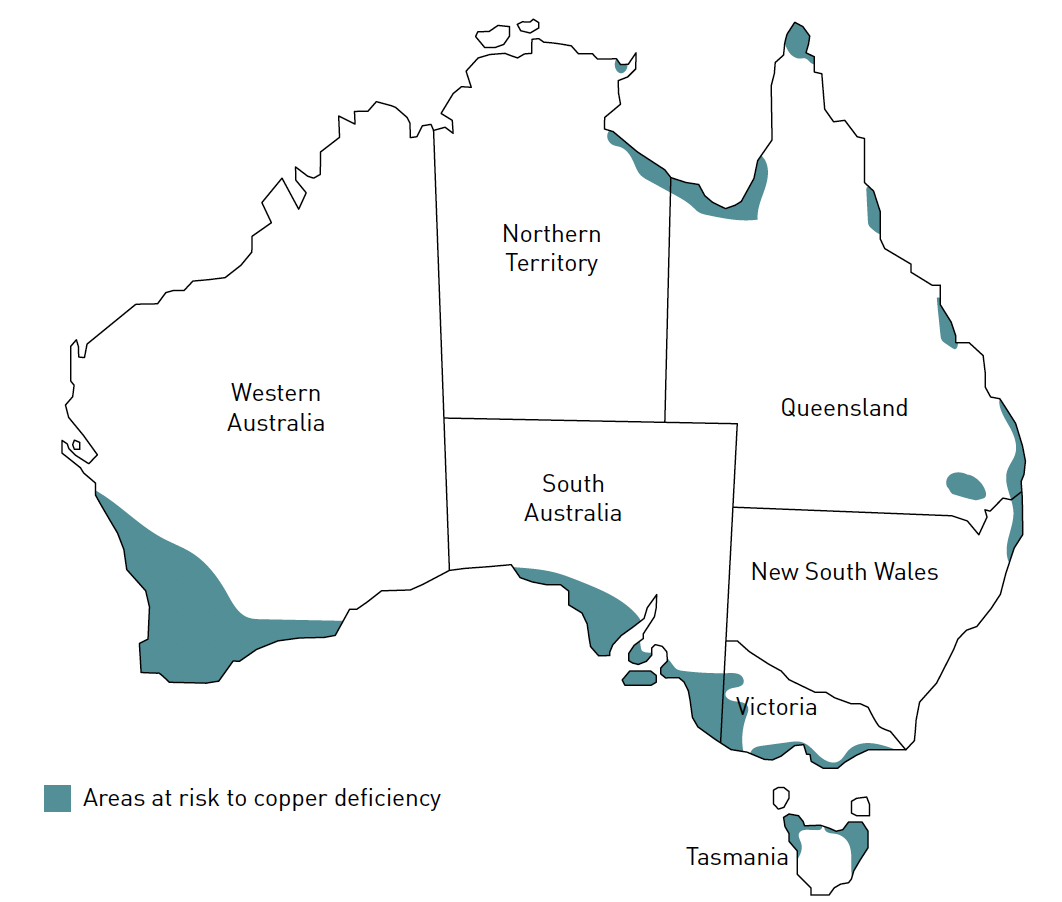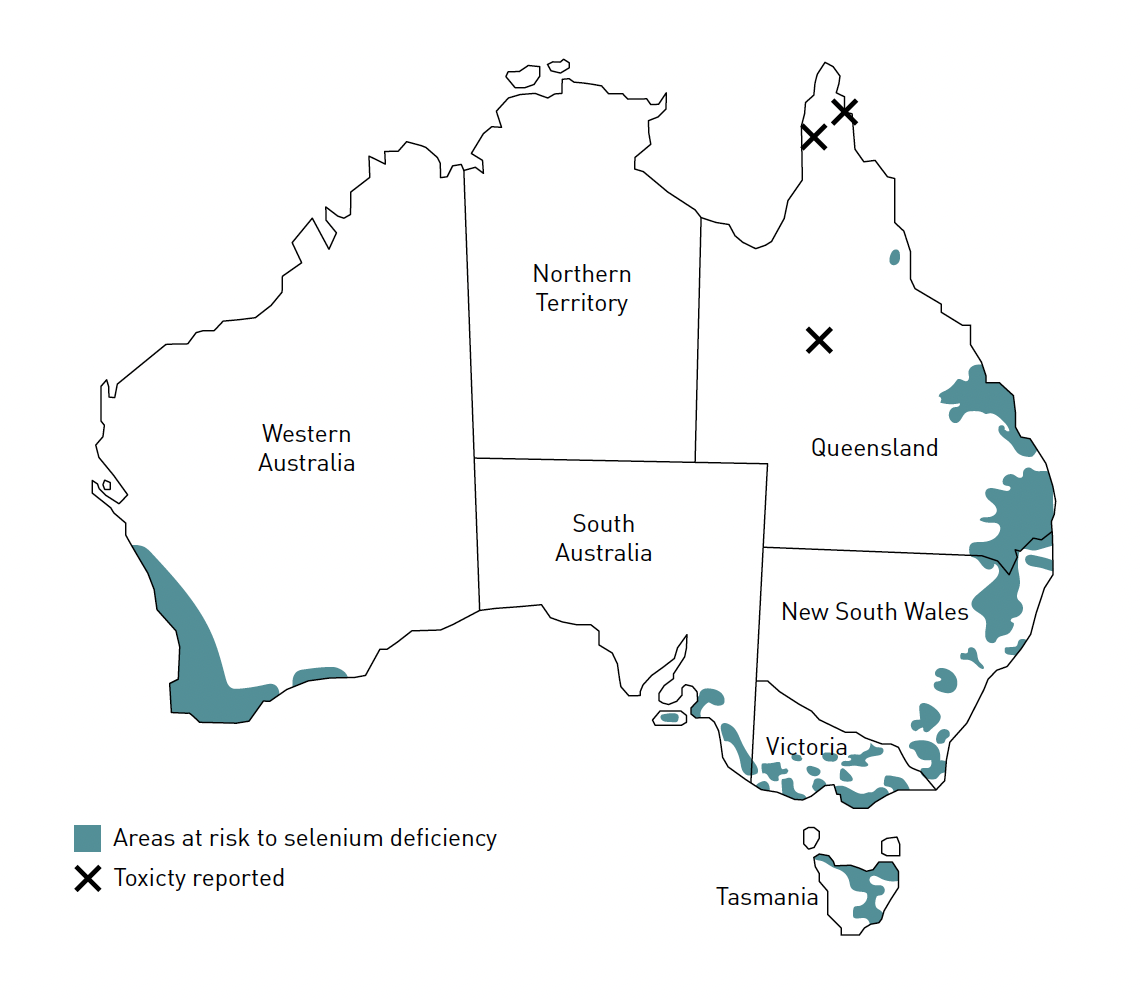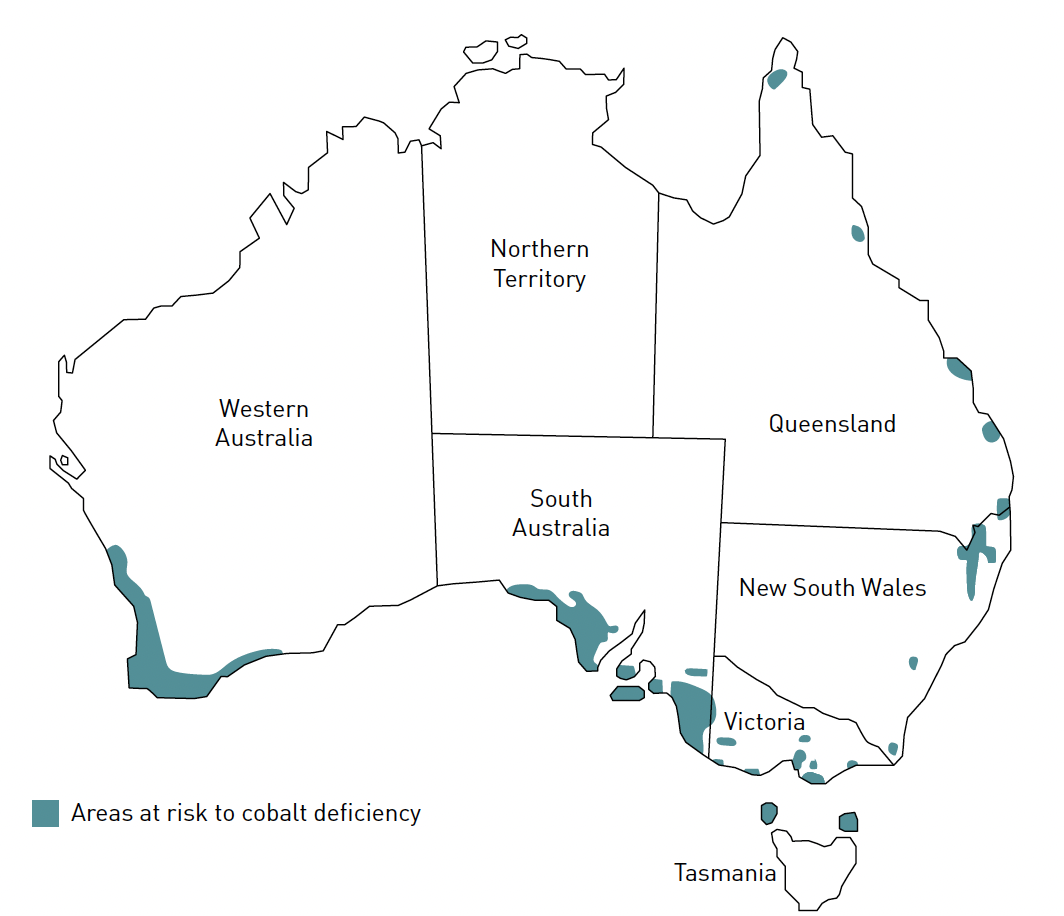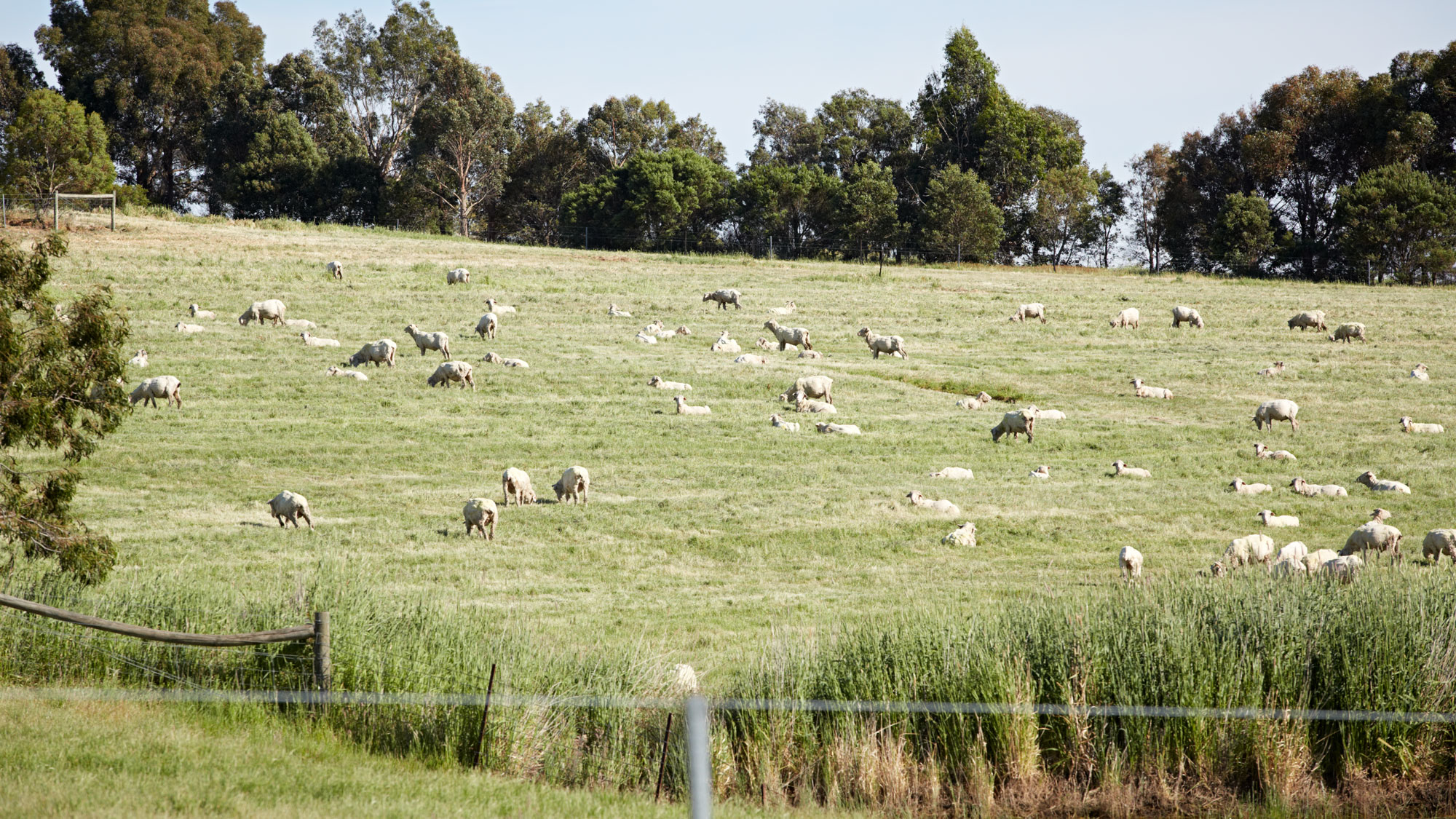Tool 11.7 Management of trace element deficiencies
Management of trace element deficiencies
Common trace element deficiencies include copper, selenium and cobalt. It’s important to know if your area has a common deficiency so you can understand if your property is affected and take steps to balance any deficiency in your sheep’s diet, which is crucial for minimising production and economic losses. Ask your neighbours, local veterinarian or sheep health advisor for advice in understanding deficiencies in your area.
Maps of trace element and mineral deficiencies for southern Australia
These maps highlight the main regions where trace element deficiencies occur but do not cover all the areas with trace element deficiencies.

Figure 1 Areas where livestock may be at risk of copper deficiency.
Source: Reprinted from C.M. Donald and J.A. Prescott (1975), Trace elements in Australian crop and pasture production, 1924-1974 in Trace elements in soil-plant-animal systems. Editors D.J.D. Nichols and A.R. Egan. Academic Press Inc. New York; pp. 7-38
|
|
|
Conditions where trace element deficiencies occur
The table below summarises the important information for the management and prevention of trace element deficiencies.
|
Trace element |
Conditions that suit deficiency |
|
Copper |
Known deficient regions such as coastal sandy soils, granite soils, peat swamps, exacerbated by excess molybdenum or lime application. Deficiency typically occurs after an extended period of green feed with copper more available in dry feed. Growing and breeding stock most at risk. |
|
Selenium |
Known deficient regions, such as coastal sandy soils, acidic soils, sedimentary and granite soils, usually in high rainfall regions. Exacerbated by high superphosphate application and clover dominance. Typically deficiencies are greatest when feed is lush. Young growing stock most at risk. |
|
Cobalt |
Known deficient regions, such as coastal calcareous sands, high rainfall granite soils and krasnozem soils (red, deep, well-structured acid soil with a relatively high clay content that gradually increases with depth). Exacerbated by liming and high superphosphate application, especially in lush seasons. Young growing stock most at risk. |
Management to prevent deficiency
|
Trace element |
Management |
|
Copper |
Copper capsules to provide longer-term (12 months) prevention. Top dress pasture periodically (usually 5–7 years) if copper in herbage low – generally most cost-effective. When applying molybdenum to pasture, add copper if copper marginal in herbage. Discuss dosage and options with your veterinarian and agronomist. |
|
Selenium |
Oral selenium drench (sodium selenite/sodium selenate) at 0.1 mg Se/kg body weight for immediate treatment of animals, giving 6–8 weeks protection. Many drenches now have selenium added but drenching frequency is a limitation. Will not protect for severe deficiency. Selenium pellets or injection for longer-term protection. Top dress pasture (depends on cost/benefit) - usually too expensive, except in high stocking rate situations. Discuss dosage and options with your veterinarian and agronomist. |
|
Cobalt |
Vitamin B12 injection (8–12 weeks prevention) or cobalt pellets for longer-term prevention. Top dress pasture (variable response). Discuss dosage and options with your veterinarian and agronomist. |








